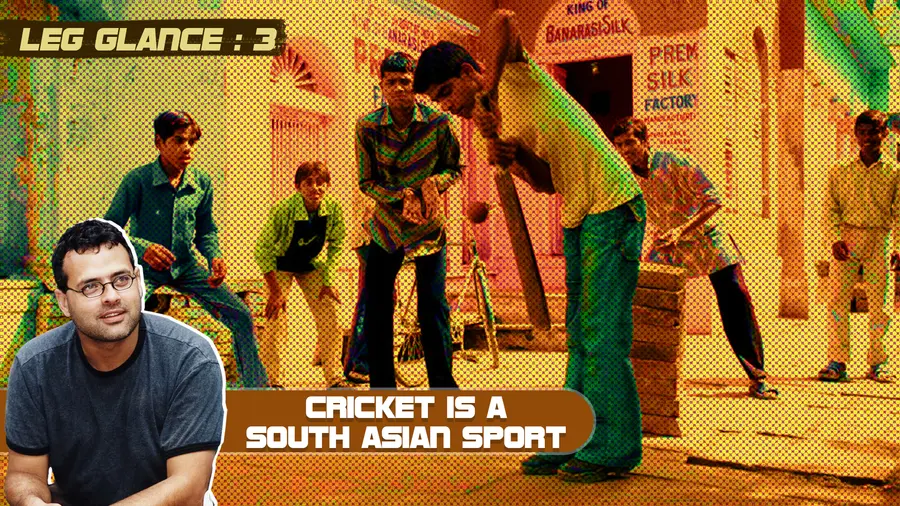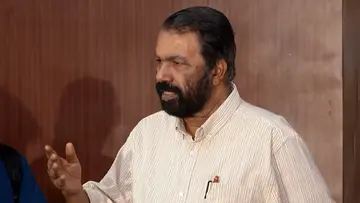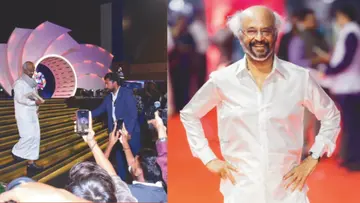Column
Cricket is a South Asian Sport

Vijay Prashad
Published on Apr 22, 2025, 11:50 AM | 6 min read
‘Cricket is an Indian sport’, Ashish Nandy wrote in hisThe Tao of Cricket(1989), ‘that the English discovered by accident’. In fact, Nandy could very well have substituted ‘South Asian’ for ‘Indian’ given the grip of the sport in Afghanistan, Bangladesh, Pakistan, and Sri Lanka. These five South Asian countries are part of the twelve elite members of the International Cricket Council, and three of the countries – India, Pakistan, and Sri Lanka – have won four of the thirteen Cricket World Cups. But most importantly, 90% of cricket’s one billion worldwide fans live in South Asia. That last point is the key one: despite theactualinvention of the game of cricket in England, the game is most fanatically played and enjoyed in South Asia. It is, in that sense, a South Asian sport.
It is difficult to explain the game to people who did not play it as kids. So much about sports is about nostalgia for things done better in one’s youth than later in one’s life. If you played a sport as a young person, you developed a body memory of that sport and that memory bathes you with the eternity of youth through your life. This applies to those who watch a sport through their life, the act of watching the sport creating its own kind of physical fanaticism. I love cricket and have always loved it. When people tell me that they either don’t understand cricket or find it absurd as a sport, I try my best not to react with anything but sympathy. Everyone else’s sport is hard to understand or appears stupid: I have no appetite for American football or for tennis, but only because I neither played them nor watched them as a young person. They are alien to me, as I suspect cricket is alien to people from non-cricket parts of the world.
India and Pakistan played their first cricket match against each other in 1952, and since then, the two sides have found that the game was drawn fully into the geopolitical rivalry between the two states. Not a match went by that was not charged with electricity. Things got so bad that the two sides would rarely play each other in their two countries, but would have to play on such neutral pitches as in Sharjah (United Arab Emirates). When relations between the two countries improved, then one side would tour the other’s main cities; when tensions inflamed, such as when the two countries went to war (1965, 1971, 1999), the two sides simply would not play each other. Cricket between India and Pakistan was, from the first, interrupted by politics.
All of this is a great pity. Many schoolchildren in South Asia have fantasised about the incredible team that would have been produced out of a united South Asia, or else about the tremendous All-South Asian cricket tournaments. When India had the world’s best spin bowlers, Pakistan had some of the finest fast bowlers: what a team they would have made, with Imran and Sarfraz sharing the ball with Bedi, Prasanna, and Chandrasekhar. Imagine the immense scores made by Zaheer Abbas and Sunil Gavaskar if the two titans of the bat had opened the innings for a South Asian team? After the independence of Bangladesh in 1971, and after Bangladeshi cricket began to come into its own, many people in the Bengali speaking regions of South Asia have wondered about a United Bengal team that would be a treat to watch against the otherwise overpowering Maharashtra. Some of this came to pass with the emergence of the Indian Premier League (IPL) in 2008, although the money power in IPL has taken some of the artistry out of the game.
As children, we would make fantasy teams and play book cricket with these teams (randomly opening the pages of any book, the 0 would be out, the 2, 4, 6 would be runs). My schoolbooks could have been mistaken for the Wisden cricket almanac. I would always have a South Asian team play the Rest of the World. The captain of the South Asian team was always Gavaskar, who appealed to me as an organic intellectual of the cricket pitch. The bowling for the South Asian side was always opened by Sarfraz Nawaz. I would often bring on Bishen Singh Bedi to bowl early because I wanted him to take five wickets every time. My Rest of the World – characteristically – was captained by Gary Sobers, and the team was populated largely by Australians and West Indians. From early on, I did not like the English team. It had something to do with theanyone but Englandmentality that afflicted all of us in the 1970s, but it was mostly to do with the behaviour of Tony Greig when he was in India (we are not monkeys, Tony).
I know that it is conventional wisdom to believe that there is animosity between the fans in India and Pakistan over their two teams. All sports are wrapped up in other social obligations, such as national pride. Chauvinism plays a role, no doubt. But let’s remember one simple fact: genuine fans love sport. They appreciate artistry. Remember the roar that greeted Mohammed Rizwan, one of the most daring of contemporary batsmen, when he scored a century in Hyderabad a few years ago. When India plays Pakistan, I always cheer for India, but if Pakistan is playing anyone else my allegiances are obviously with Pakistan. It saddens me equally to see both Babar Azam and Virat Kohli slip into bad form; these twins in pads had the most elegant way to send off any errant ball beyond the boundary. No amount of national pride can take away the excitement of the day when either Jasprit Bumrah or Mohammed Abbas starts their run up with a shining red ball in their hand, ready to bang into the pitch and test the mettle of the eyesight of the batsmen and their reflexes.
Cricket is a South Asian sport, and anything that is shared is also able to divide. But it is one of our great shared cultures and we should cherish that.










0 comments